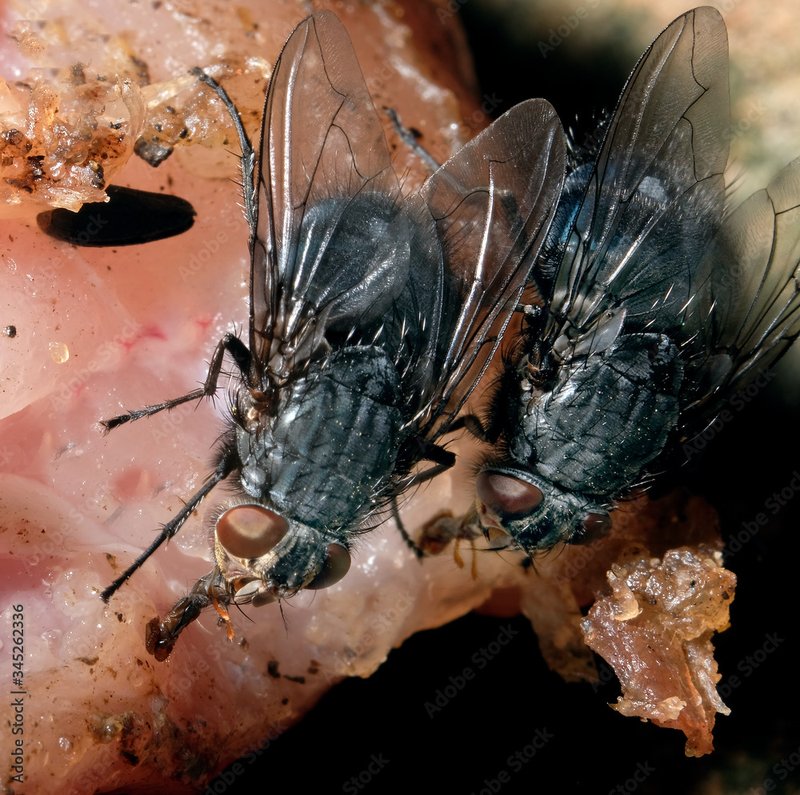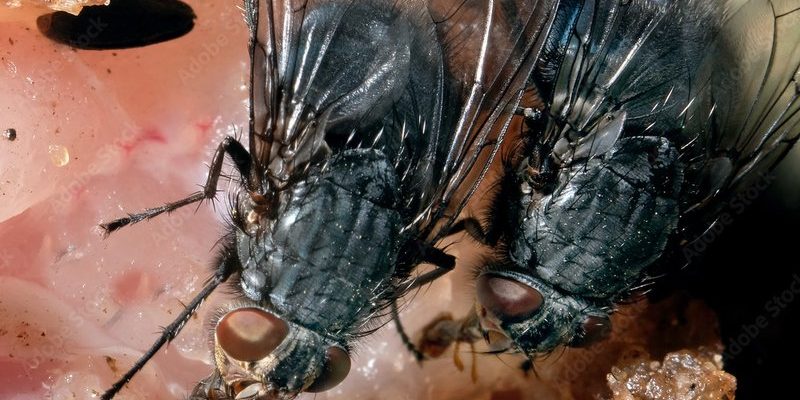
Scientists have studied houseflies for years, investigating everything from their genetics to their behavior. By examining these insects, researchers have gained insight into how living organisms adapt to their environments. In this article, we’ll explore some of the key areas where houseflies have been studied, revealing just how much these small creatures can teach us.
The Anatomy of a Housefly
To appreciate the studies conducted on houseflies, let’s first take a look at their anatomy. Houseflies, or *Musca domestica*, have a unique body structure. Their bodies are divided into three main parts: the head, thorax, and abdomen.
– The head is packed with sensory organs. Flies have large compound eyes that give them vision in nearly every direction. This helps them evade predators quickly. Imagine trying to catch a housefly in your kitchen; they always seem to know when you’re coming for them.
– The thorax contains the muscles responsible for flight. Houseflies can beat their wings about 200 times per second, which allows them to perform acrobatic maneuvers in the air. That’s like having a tiny helicopter buzzing around your kitchen!
– Lastly, the abdomen is where digestion happens. Houseflies are also known to eat quite a bit—mostly decaying organic matter. This aspect has drawn attention from scientists interested in decomposition and nutrient cycling.
Understanding the anatomy of a housefly gives researchers clues about their behaviors, survival strategies, and even the environment they thrive in.
Genetic Studies on Houseflies
One of the exciting areas of research involving houseflies is genetics. The housefly’s relatively short lifespan and rapid reproduction rates make it an ideal organism for genetic studies. Scientists have mapped out the fly’s entire genome, which is the complete set of genes they carry.
This genetic mapping is crucial for several reasons:
- Adaptation: By studying the genes responsible for physical traits, scientists can learn how houseflies adapt to different environments. For instance, some flies that live in urban areas have developed resistance to various insecticides.
- Evolution: Houseflies have been around for millions of years. By analyzing their genetic makeup, researchers gain insights into evolutionary processes and how species evolve over time.
- Human health: Understanding the genes of houseflies can even help in studying diseases since these flies can carry pathogens that affect humans.
In essence, studying housefly genetics allows scientists to unlock the mysteries of evolution and adaptation in living organisms. It’s a bit like using a family tree to understand where you came from—except it’s about the origins of a species!
Behavioral Studies: Learning from Houseflies
Houseflies also offer a fascinating look into behavior. Researchers observe their patterns and interactions, which can be surprisingly complex. For instance, houseflies use their sense of smell to locate food. They have specialized receptors on their antennae that help them detect odors from great distances.
Let’s think about it: when you’re cooking, how often do houseflies appear out of nowhere? Their strong sense of smell guides them right to that delicious food. This behavior is important for scientists studying how insects communicate and interact with their environments.
Moreover, understanding how houseflies behave can shed light on more than just pest control. Here are a few intriguing insights:
- Learning: Houseflies have been shown to exhibit learning behaviors, such as associating certain smells with food rewards. This challenges the idea that insects cannot learn as effectively as larger animals.
- Social interactions: Houseflies often engage in competitive behaviors, such as fighting for territory. Observing these interactions helps scientists learn about resource allocation in nature.
- Response to stress: Studies have also shown how flies respond to stressful environments, which can inform broader research on stress responses in living creatures.
In short, through observing housefly behaviors, scientists can learn about a wealth of behaviors that, surprisingly, can parallel aspects of human behavior.
The Role of Houseflies in Disease Transmission
Houseflies are often viewed as vectors for disease. They can carry pathogens on their bodies and in their intestines, which can lead to the spread of various illnesses. This has made them a significant subject of study in public health.
Here’s why studying houseflies in this context is important:
– Transmission Pathways: By investigating how houseflies transmit diseases, researchers can develop better strategies for controlling outbreaks. Flies can spread germs from decaying matter to food, making them a potential hazard in food safety.
– Vector Control: Understanding the lifecycle of houseflies helps in developing targeted pest control strategies. This can minimize their populations and reduce the risk of disease transmission without affecting other beneficial insects.
– Public Awareness: Awareness about the risks associated with houseflies helps communities adopt better hygiene practices. This can be as simple as keeping food covered or ensuring trash is disposed of properly.
By studying disease transmission through houseflies, scientists can gain insights into preventing potential outbreaks and maintaining public health.
Modern Technology and Housefly Research
Believe it or not, modern technology plays a significant role in studying houseflies. Researchers now use advanced techniques like gene editing and imaging technologies to understand these insects better.
For example:
– CRISPR Technology: Scientists can use CRISPR to edit the genes of houseflies. This can help them study specific traits or behaviors. It’s kind of like being able to “rewrite” the genetic instructions to see how changes affect their behavior and physiology.
– Imaging Techniques: Advanced imaging allows researchers to observe housefly brains in action. They can visualize how flies make decisions or respond to stimuli. It’s like watching a live-action movie of their thought processes!
– Data Analysis: With the help of data analysis tools, scientists can process large amounts of information to identify patterns or trends in housefly studies. This helps them make connections between behavior, genetics, and public health.
Incorporating technology into housefly research opens up new possibilities for understanding these insects and their influence on various ecological and health-related factors.
So, after diving into the world of housefly research, it’s clear that these tiny creatures are much more than just pests. They play a crucial role in various scientific studies, from genetics and behavior to disease transmission and technology.
In a way, houseflies can serve as a reminder that even the smallest organisms can provide deep insights into life itself. Whether you see them buzzing around your kitchen or flitting across a garden, remember that there’s a wealth of knowledge waiting to be uncovered about them. Scientists continue to find value in studying houseflies, revealing how they fit into the larger puzzle of life on Earth.
Next time you swat at a housefly, pause for a moment and appreciate the scientific intrigue buzzing just beneath the surface!

